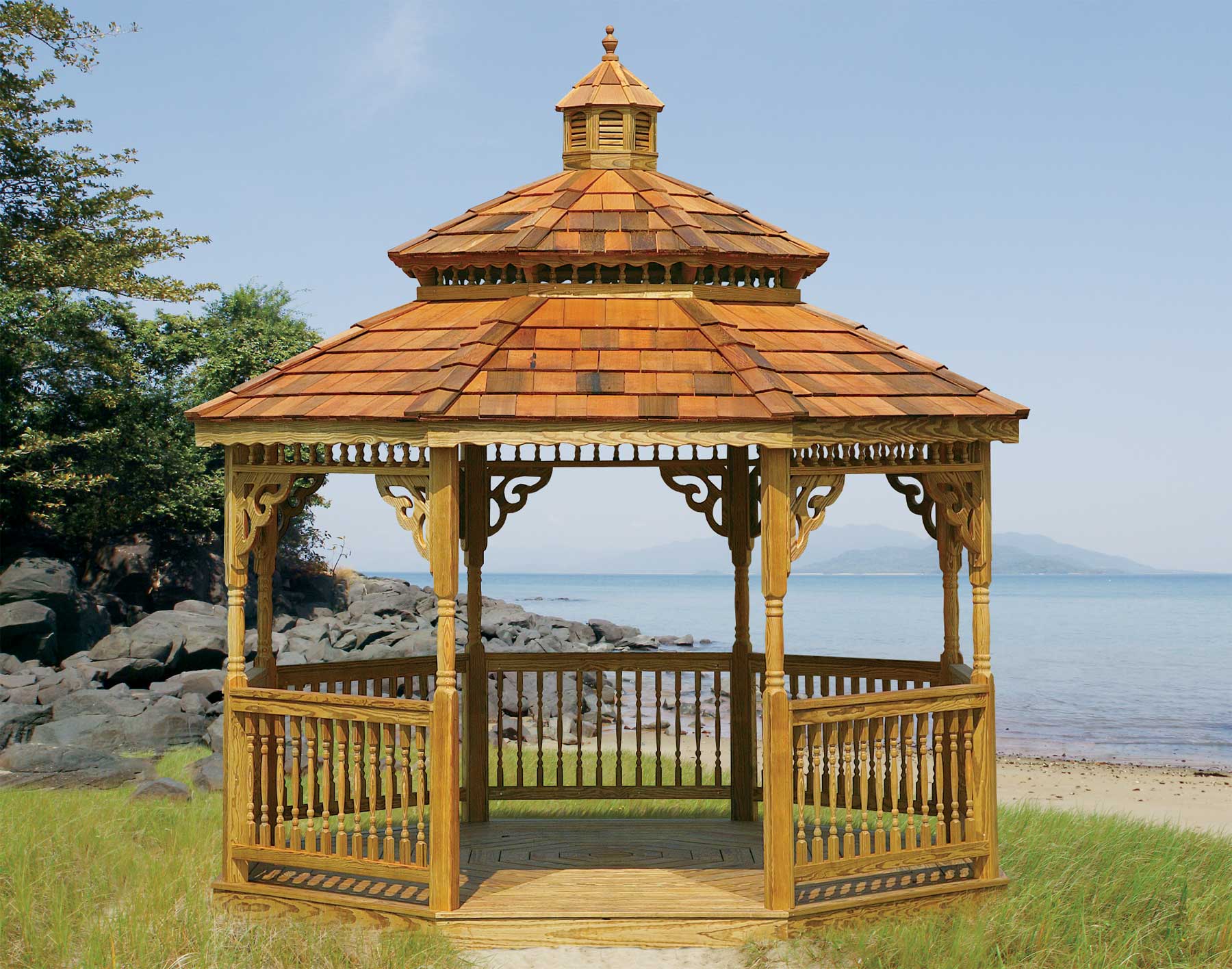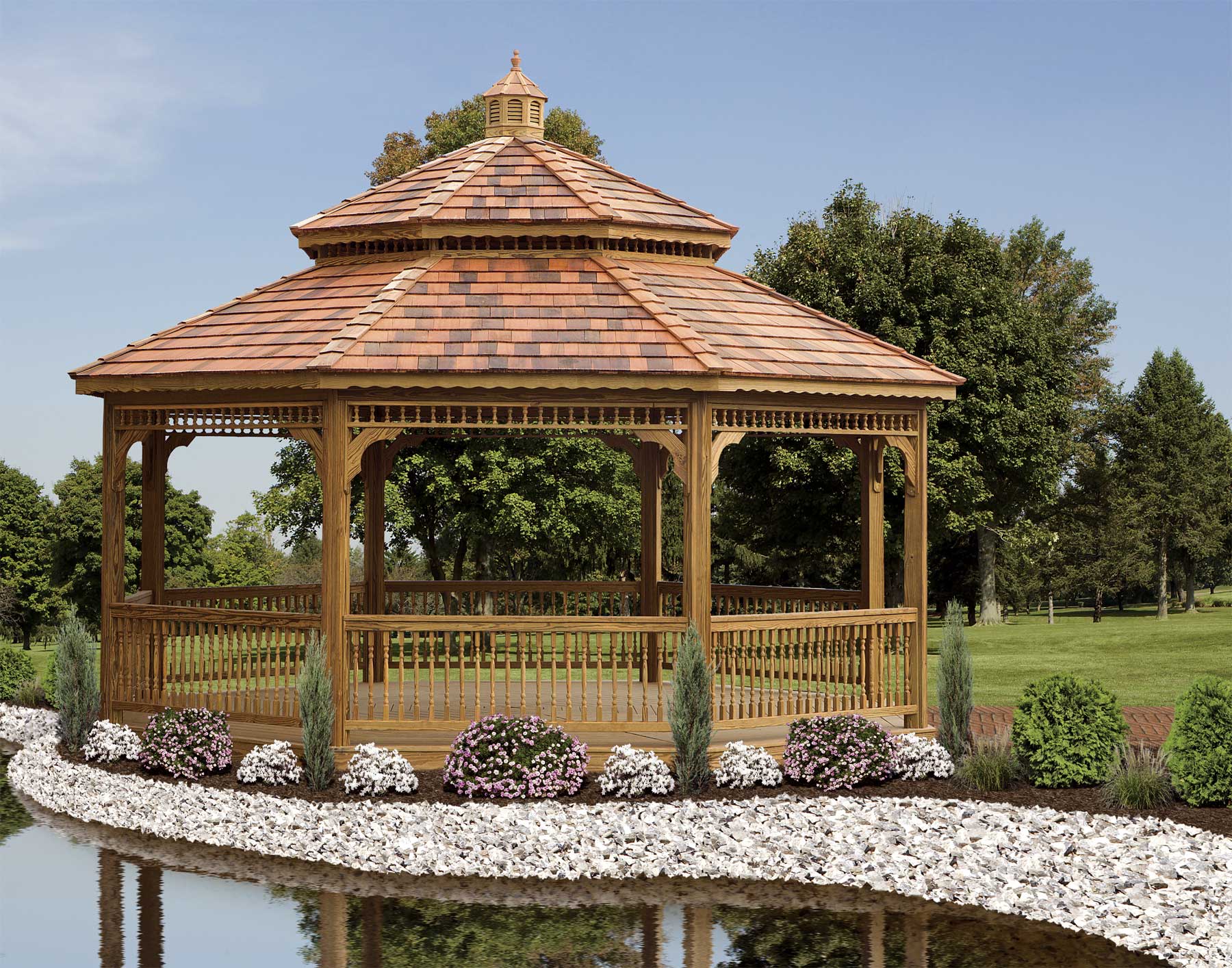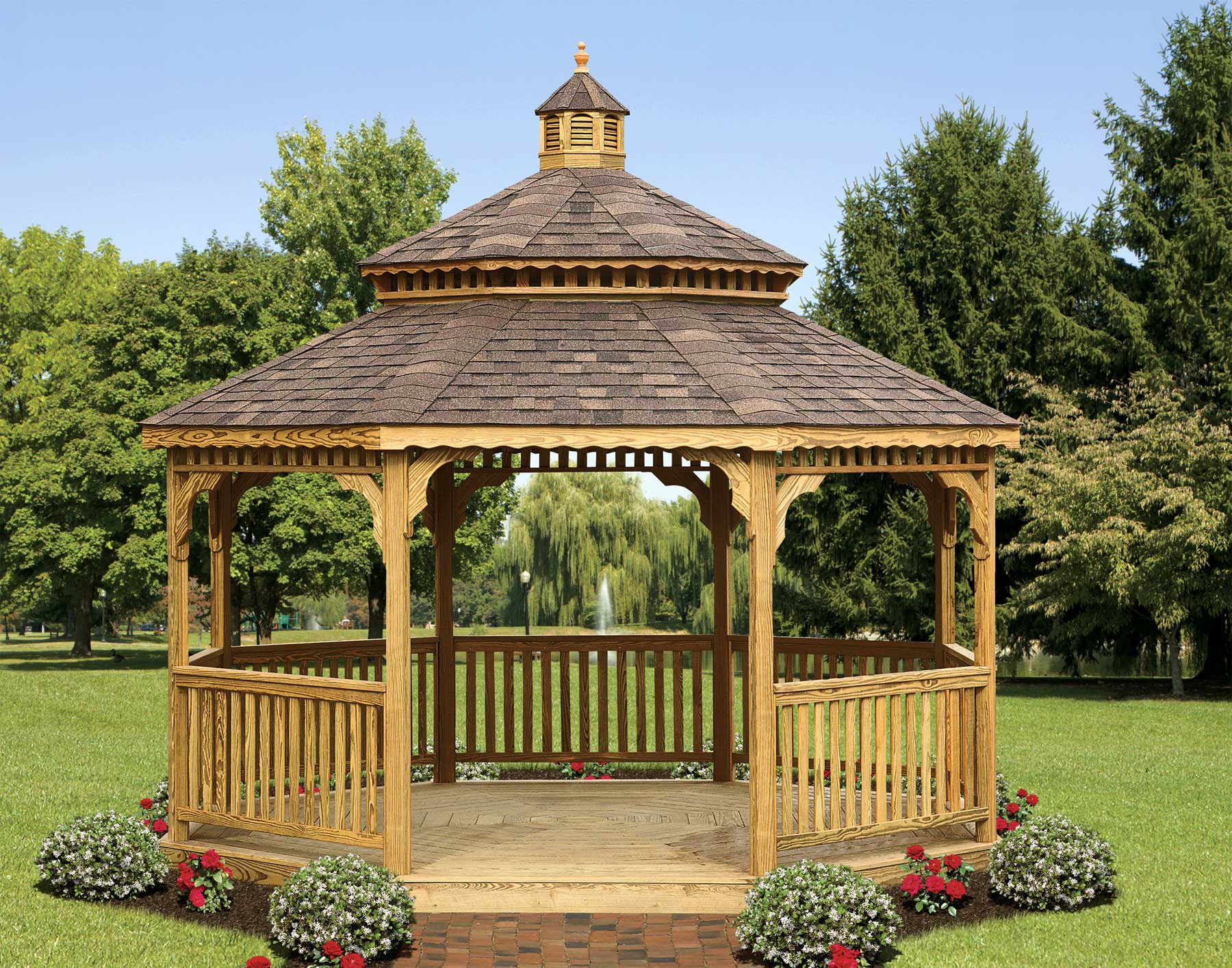Gazebo Solar Panels: Brightening Your Outdoor Spot
Thinking about making your outdoor living area even better, perhaps with something that helps the planet and saves a little money too? Many folks are looking at new ways to make their backyards or patios more useful and comfortable. You might already have a lovely gazebo, a place to keep cool and stay out of the sun, or maybe you are just starting to look at options like a hardtop gazebo. Well, there's a pretty neat idea gaining steam: adding solar panels to your gazebo. It really can make a big difference for your outdoor fun, you know, and it's something many people are getting interested in right now.
Picture this: your backyard spot, perhaps a cedar wood or galvanized steel gazebo, now has its own way of making electricity. This isn't just about being kind to the Earth; it's also about making your outdoor space work harder for you. You can find gazebos in all sorts of shapes and sizes, from rectangular to octagonal, made of wood or metal, fitting almost any taste and budget. Adding solar panels to these structures is a way to take that comfort and usefulness up a notch, providing power right where you need it, which is actually quite clever.
This idea of putting solar panels on a gazebo is a topic many are curious about. People often wonder what works, what doesn't, and just how much energy you can get from such a setup. Some even ask if there are other, maybe better, solar structure choices out there. We're going to talk about all of that, so you can see if adding solar panels to your gazebo is the right move for your home. It's a way to really change how you use your outdoor area, and that's pretty exciting, if you ask me.
Table of Contents
- Can You Really Put Solar Panels on a Gazebo?
- Why Think About Solar Panels for Your Gazebo?
- How to Add Solar Panels to Your Gazebo
- What Kind of Energy Can a Gazebo with Solar Panels Make?
- What to Look For in a Solar-Ready Gazebo
- Solar Accessories for Your Outdoor Space
- Other Solar Shade Structures
- Frequently Asked Questions About Gazebo Solar Panels
- Making Your Outdoor Area Better with Solar
Can You Really Put Solar Panels on a Gazebo?
Yes, you absolutely can put solar panels on a gazebo. This is a question many people ask, and the answer is a clear yes. It's becoming more and more common, and you might even find products already made this way. For instance, some folks have seen solar-powered cedar wood framed steel hardtop gazebos that come with LED lighting and Bluetooth sound built right in. This shows that the idea is not just possible but is something manufacturers are already doing, which is pretty cool, if you think about it.
To add solar panels to your gazebo, you really start by looking at where your gazebo sits. You need to check its location and how it faces to get the most sunlight. This is very important for making sure your panels work well. You also want to pick panels that are good at turning sunlight into power, like monocrystalline panels, which are known for getting a lot of energy. This careful planning helps you get the best results from your solar setup, so you're not wasting any of that precious sun.
The frame of a hardtop gazebo is typically quite strong, which makes it a good base for holding solar panels. These structures are built to last decades, with good craftsmanship and a trustworthy build. So, you can feel pretty good about putting something extra on top of them. Knowing what works and what doesn't, and how much energy you can actually get, is a big part of making a smart choice. There are even specific solar structure options that might be a better fit depending on what you want to achieve, so it's worth exploring.
Why Think About Solar Panels for Your Gazebo?
Adding solar panels to your gazebo brings a lot of good things to the table. It's not just a trend; it's a practical way to get more out of your outdoor living space. People are often looking for ways to make their homes more efficient and enjoyable, and solar-powered gazebos fit right into that idea. There are a few main reasons why someone might choose to go this route, and they mostly have to do with making life outside a bit easier and more pleasant, you know, for everyone.
Comfort and Convenience Outdoors
Gazebos are already great for keeping you cool and out of the sun. They make your outdoor area more comfortable and useful. When you add solar panels, you can power things like lights, fans, or even charge your phone right there in your gazebo. This means you can entertain friends and family well into the evening, without needing long extension cords or worrying about finding an outlet. Imagine having a solar ceiling fan light with a battery, or even outdoor ceiling fans with adjustable settings, powered by those very panels. It really does make a big difference for how you use the space, giving you more options, which is pretty handy.
Some gazebos even come with built-in features like LED lighting and Bluetooth sound, all run by solar power. This kind of setup means you get instant comfort and fun without any extra fuss. It's about making your patio or backyard a truly functional spot, a place where you can relax, read, or have a party with ease. So, in a way, it's about making your outdoor life just a little bit simpler and more enjoyable, and that's a good thing, really.
Saving a Bit of Money
Using solar power for your gazebo means you're not pulling electricity from your home's main power grid for those outdoor needs. This can, over time, help to lower your electricity bills. While the first cost of putting in solar panels might be something to think about, the long-term savings can really add up. It's a bit like investing in something that pays you back over time, which is a smart move for many families. So, you get to enjoy your outdoor space more, and potentially keep some money in your pocket, too, which is a nice bonus.
For example, if you're running outdoor lights every night or using a fan often, that can contribute to your power usage. With solar panels, that energy comes directly from the sun, free of charge after the initial setup. This makes your gazebo a more self-sufficient spot. It's a pretty practical approach to managing energy use, and many people are finding it makes a lot of sense for their homes these days, especially with energy costs being what they are.
Being Kind to the Planet
Solar power is a clean energy source. It doesn't create pollution or greenhouse gases when it's making electricity. By choosing to add solar panels to your gazebo, you're doing your part to help the environment. This is something many people care about deeply today. It shows a commitment to using resources wisely and reducing your carbon footprint, which is a pretty big deal. So, you're not just making your outdoor space better for yourself, but you're also contributing to a healthier planet, which is, honestly, a wonderful thing to do.
This eco-friendly aspect is a strong pull for a lot of homeowners. It's about living in a way that supports the world around us. Solar patio covers, solar gazebos, and solar pergolas are all types of shade structures that can give your home solar electricity. This means your outdoor fun can be powered by sunshine, a truly renewable resource. It's a simple step, yet it has a really positive impact, and that's something to feel good about, you know.
How to Add Solar Panels to Your Gazebo
Adding solar panels to your gazebo involves a few steps to make sure everything works well and safely. It's not overly complicated, but it does need some thought and planning. People who have done this say that getting the details right at the start makes a big difference in how much energy you get and how happy you are with the setup. So, let's look at how you can go about it, step by step, which is, like, a pretty good way to start any project.
Picking the Right Spot
The very first thing you need to do is look at your gazebo's location. You want to find out how much sun it gets throughout the day. This means checking its orientation, or which way it faces, and if anything blocks the sun, like tall trees or other buildings. For maximum sunlight exposure, you want a spot that gets direct sun for most of the day, especially during the peak sun hours. This is absolutely key for your solar panels to make as much power as possible. If there's a lot of shade, your panels won't work as well, so that's something to really consider, you know.
You might even watch the sun's path over a day or two to get a real feel for it. The goal is to avoid shadows that fall on the panels. A gazebo that's already in a sunny part of your yard is a great starting point. This careful evaluation of the location helps you make sure your investment in solar panels pays off in terms of energy production. It's a pretty straightforward idea, but it's very important, honestly.
Choosing Your Panels
Once you know where your gazebo will get the most sun, you need to pick the right kind of solar panels. My text mentions choosing efficient panels, like monocrystalline ones, for peak energy. These types of panels are known for being very good at turning sunlight into electricity, even in smaller spaces. They are often a good choice for something like a gazebo where you might not have a huge area to cover. You want panels that can give you a lot of power from the space you have available, so that's a big part of it.
There are also different sizes and wattages of panels. You'll want to think about how much power you need for the things you want to run in your gazebo. Do you just need a little bit for some lights, or do you want enough to run a fan and charge devices? Knowing your power needs helps you choose the right number and type of panels. Some newer panels are even bifacial, meaning they can collect light from both sides, which is pretty neat and can give you a little extra power, apparently.
Getting It All Set Up
After you have your spot and your panels, it's time to think about putting them on the gazebo. The frame of a hardtop gazebo is typically strong, which is good for holding the weight of the panels. You'll need a way to securely attach the panels to the gazebo's roof or frame. This often involves special mounting hardware that keeps the panels stable and angled correctly towards the sun. It's important that the panels are put on safely so they don't move in strong winds or bad weather, which is just common sense, really.
You'll also need to connect the panels to a charge controller, a battery (to store the energy for when the sun isn't shining), and an inverter if you want to use regular household appliances. This whole system works together to take the sun's energy, store it, and then let you use it. If you're not sure about doing the wiring yourself, it's a good idea to get help from someone who knows about solar setups. This ensures everything is done correctly and safely, which is definitely the way to go, you know, for peace of mind.
What Kind of Energy Can a Gazebo with Solar Panels Make?
A gazebo with solar panels can make direct current (DC) electricity, which is the kind of power that comes straight from the sun. This DC power can then be used in a few ways. For example, it can directly power things that run on DC, like some LED lights or small fans. However, most everyday items we use, like phone chargers, laptops, or even some outdoor ceiling fans, need alternating current (AC) power. So, you'll usually have an inverter in your setup that changes the DC power into AC power, which is pretty standard, actually.
The amount of energy your gazebo can make depends on a few things. It depends on the size and number of your solar panels, how much sunlight they get each day, and how efficient those panels are. A small setup might only be enough to power a few lights and charge a phone. A larger setup, especially with more powerful panels, could potentially run a small outdoor refrigerator, a sound system, or even contribute a little bit of electricity to your home, which is quite interesting, in a way.
My text mentions that solar patio covers, solar gazebos, and solar pergolas are types of shade structures that can provide your home with solar electricity. This means that if your system is big enough and connected to your home's electrical panel (which usually requires professional installation and permits), the extra power your gazebo makes could go into your house. This is a pretty advanced setup, but it shows the potential of these structures. Even without connecting to your home, having independent power for your outdoor space is very useful, and that's the main idea, really.
What to Look For in a Solar-Ready Gazebo
If you're thinking about buying a new gazebo with the idea of adding solar panels, or even one that comes with solar already, there are some things you might want to consider. The market has new products that can really take your outdoor space to the next level. You want to pick a gazebo that will be a good partner for your solar plans. So, when you're shopping, keep these points in mind, which is, like, a pretty smart way to go about it.
First, think about the gazebo's structure. A hardtop gazebo with a strong frame, maybe made of galvanized steel or cedar wood, is often a good choice because it can handle the weight of solar panels and last a long time. Valley Structures’ gazebos, for instance, are built to last decades with quality craftsmanship and are trustworthy. You want something sturdy. Also, consider the roof design; a flat or gently sloped roof might be easier to mount panels on than a very steep or decorative one. This is pretty basic, but it matters for installation.
Next, think about the size and shape. Costco.com offers a wide range of gazebos in all different shapes and sizes, from rectangular to octagonal. The size of your gazebo will affect how many solar panels you can fit on it. A 10x12 hardtop metal gazebo or a Sunjoy Elmgrove outdoor patio 12 x 14 ft model could offer a good amount of roof space for panels. More space generally means more panels, and more panels mean more power, which is pretty simple, actually.
Finally, some gazebos are now specifically designed with solar in mind. My text mentions a stylish Chiko USA black steel carport with integrated solar pergola and gazebo, which combines sleek design with eco-friendly features. These types of structures might already have the wiring pathways or mounting points built in, making the solar addition much easier. Looking for gazebos that are "solar powered" or "solar ready" can save you a lot of time and effort down the road, and that's a good thing, you know.
Solar Accessories for Your Outdoor Space
Once you have your gazebo and perhaps your solar panels, you can really make your outdoor space shine with some cool solar-powered accessories. These items often come equipped with powerful solar panels themselves, or they can be powered by your gazebo's main solar setup. It's about adding those little touches that make your outdoor time more enjoyable and functional, which is pretty much what everyone wants, right?
For example, you can get solar ceiling fan lights with batteries. Some even come with adjustable thermostats and bifacial solar panels, like the 20 outdoor ceiling fans mentioned in my text. These are perfect for keeping you cool on a warm day and providing light in the evening, all without needing an electrical outlet nearby. They are super convenient for a gazebo, chicken coop, or even an RV. So, you can have comfort and light right where you need it, which is very handy.
Beyond fans and lights, you can also find solar-powered string lights for decoration, small solar fountains to add a calming sound, or even solar chargers for your devices. These little additions can really change the feel of your gazebo area, making it a more inviting and useful place. They add a touch of modern convenience to your outdoor living, and that's something many people are looking for these days, honestly.
Other Solar Shade Structures
While we're talking about gazebo solar panels, it's worth knowing that gazebos aren't the only outdoor structures that can use solar power. There are other options that can also provide shade and generate electricity for your home or outdoor needs. These structures are becoming more popular as people look for creative ways to use solar energy. So, it's good to know what else is out there, which is, like, pretty useful information.
My text mentions solar patio covers and solar pergolas. These are similar to gazebos in that they

Treated Pine Double Roof Octagon Gazebos | Gazebos by Style

Treated Pine Double Roof Octagon Gazebos | Gazebos by Material

Treated Pine Double Roof Octagon Gazebos | Gazebos by Material